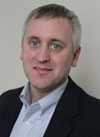
Nov. 21, 2018 – Let’s say you are working on a contract or a legal brief. How long can you work continuously on that project without a single interruption? How many interruptions do you think you experience per day? How many are self-interruptions?
An interruption stops continuous progress toward an activity or process. Not all interruptions are bad, but researchers have found that interruptions that shift one’s focus or thinking from the topic or project at hand can seriously impact productivity.
That is, more than 23 minutes could be lost on a project when an interruption switches a lawyer’s focus from one task to another, according to one study of office workers. These could be self-induced, such as checking a new email or browsing the internet.
Clio, a law practice management platform, conducted another study with this conclusion: one-third of legal professionals face six to 10 interruptions per day.
Let’s do the math on that. If you lost 23 minutes of billable work, 10 times per day, that’s three hours and 48 minutes. Of course, lawyers have different work habits and different working environments, but assessing how interruptions impact productivity should be on every lawyer’s radar, especially lawyers whose financial fate is tied to billable hours.
What Distractions?
Paul Unger, a law practice consultant, deals in distraction management. He says email distractions provide a good example of how lawyers can get derailed so easily.
“Probably the biggest mistake that lawyers make … we tend to come in to the office and we go right to email. We get distracted and derailed the moment that we walk in,” said Unger, who spoke at the recent Wisconsin Solo and Small Firm Conference (WSSFC).
One of Unger’s recommendations: “batch process emails.” Don’t leave email screens open and check them immediately when received. Instead, set aside specific times of the day to check and respond to emails in batches, with a system to process them.
Email is just the tip of the iceberg. Unger says lawyers and other professionals are constantly inundated with information that can cloud the brain and cause underperformance, including the internet, social media, and instant messaging.
<iframe src="//www.youtube.com/embed/Y2go0CSl3j0" width="525" height="295" frameborder="0" allowfullscreen></iframe>
Law practice consultant Paul Unger says that the biggest mistake lawyers make is getting bogged down with email. He recommends checking email only during specific times during the day and focusing on single tasking.
Renowned psychiatrist Edward Hallowell calls it attention deficit trait (ADT). Unlike its related cousin, attention deficit/hyperactivity disorder, ADT is a product of the environment.
“Like the traffic jam, ADT is an artifact of modern life. It is brought on by the demands on our time and attention that have exploded over the past two decades,” Dr. Hallowell wrote in 2005, in “Overloaded Circuits: Why Smart People Underperform.”
“As our minds fill with noise – feckless synaptic events signifying nothing – the brain gradually loses its capacity to attend fully and thoroughly to anything,” he wrote.
Dr. Hallowell was talking about this problem in 2005, saying the number of people seeking his help for ADT had “mushroomed by a factor of 10 in the last decade.”
Imagine what the problem looks like now, in 2018, when the world is creating 2.5 quintillion bytes of data each day. Google processes 40,000 search queries per second, which amounts to 3.5 billion searches per day and 1.2 trillion searches per year.
If you haven’t been distracted yet, keep reading.
Dealing with Distractions
More recently, Dr. Hallowell developed a short assessment “to see which of the six most common types of workplace distractions interfere with your ability to focus and be productive.” The assessment generates an ADT score and tips to improve focus.
 Joe Forward, Saint Louis Univ. School of Law 2010, is a legal writer for the State Bar of Wisconsin, Madison. He can be reached by email or by phone at (608) 250-6161.
Joe Forward, Saint Louis Univ. School of Law 2010, is a legal writer for the State Bar of Wisconsin, Madison. He can be reached by email or by phone at (608) 250-6161.
For instance, if the assessment indicates that electronic devices are a distractive problem, assessment results provide three tips on how you can address it.
Here’s one: “Set aside pockets in your day for devices: an hour in the morning, an hour in the afternoon. Outside those scheduled times, turn off your devices. Make sure your colleagues and clients know that you may not be available at all times.”
This tip may sound simple enough, but implementing a plan to address the multitude of distractions that can cause underperformance is the key to treating something like ADT.
“One of the other mistakes that lawyers make is that we don’t have a plan, we don’t have a roadmap for the day,” said Unger. “Take five minutes, and create a roadmap. It’s an easy habit to develop. Look at everything on your plate and create your plan.”
Develop the plan in a daily planner or journal, or even on an index card, Unger says. Identify the tasks that you must complete that day, and time-block them in 30-minute increments. “I like it in paper because you can’t minimize it, it’s always there,” he said.
<iframe src="//www.youtube.com/embed/tDpFmwEiIQQ" width="525" height="295" frameborder="0" allowfullscreen></iframe>
To save time, try “batch processing” your emails, says Paul Unger. He shares his system for how to process messages so that email works for – instead of against – you.
Email management is a big one. Citing a 2010 study, Unger said the typical professional sends and receives more than 100 emails per day. While email has transformed communications, it created different management problems that lawyers must address.
At the WSSFC, Unger outlined his action plan for dealing with emails, and noted specific tips to maximize efficiency with respect to email. But he also provided attention management tips that can make an immediate impact on your productivity.
Instead of multi-tasking, Unger recommends that lawyers practice “single-tasking” for at least 25 minutes, with five-minute breaks in between. “The science shows that after 25 minutes, our brain starts to stray. Dive in for 25 minutes, then take a break.”
In addition, turn off all notifications. Unger said allowing notifications, whether through email platforms or smart phones, is like giving the world “a hotline to our brain.”
Next: Tackle Efficiency
A recent report noted that 84 percent of law firms view increased revenue as a top priority. At the same time, based on the number of billable hours worked, invoiced, and collected, lawyers are actually paid for about 2.4 hours per day, on average.
“It’s clear that law firms struggle to dedicate time to billable work,” according to Clio’s most recent Legal Trends Report, which aggregated anonymized data from almost 70,000 legal professionals to track critical metrics for efficiency and other key indicators.
Learning to maximize efficiency is a common thread among solo and small firm attorneys, who must often manage both the practice and business aspects of the firm.
Now that you’ve minimized the distractions that impact productivity, can your firm create more efficiencies to increase billable hours and reduce time spent on other tasks?
<iframe src="//www.youtube.com/embed/m0lDr8Of0BQ" width="525" height="295" frameborder="0" allowfullscreen></iframe>
Identify the tasks that you must complete each day, says Paul Unger. He shares tips for keeping a daily planner to create a work day roadmap.
Christopher Shattuck, who manages the State Bar of Wisconsin’s Practice 411™ program, keeps lawyers regularly informed of the latest law practice management and technology tools available to streamline law practices on the Practice 411 e-list.
“Lawyers who embrace technology can certainly improve productivity by streamlining administration and automating certain functions,” Shattuck said.
“The key is finding the right tool to fit the specific problem or issue the lawyer is trying to fix or improve. Many lawyers may not know there’s an application or process available.”
In addition, the 2018 WSSFC featured numerous sessions on efficiency, including ones that focused on maximizing Microsoft Word, and tackling document automation.
Both are available as webcast replays in the next three months, with morning replays on Nov. 30, Dec. 12, Dec. 28, and Jan 17. Register for Document Automation Made Easy: Tips, Tricks, and Tools for Everyone and/or What You Didn’t Know MS Word Can Do.
